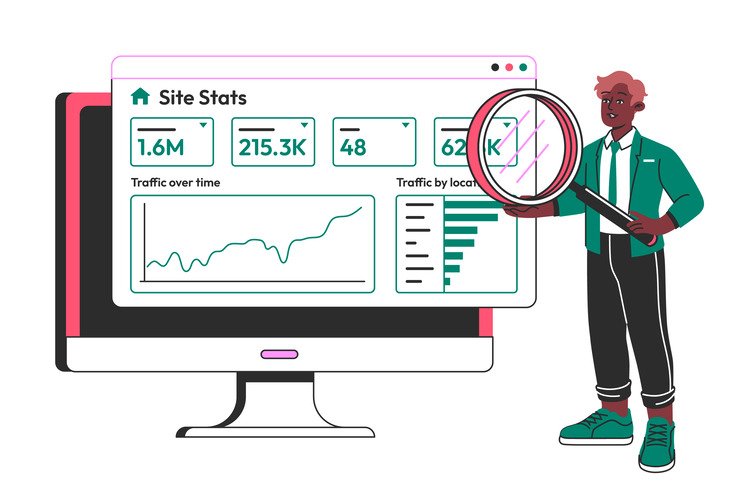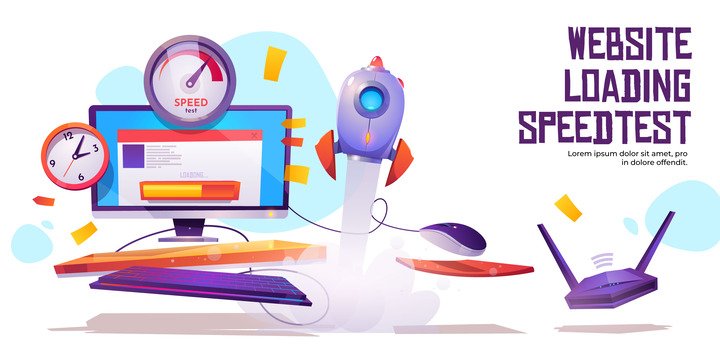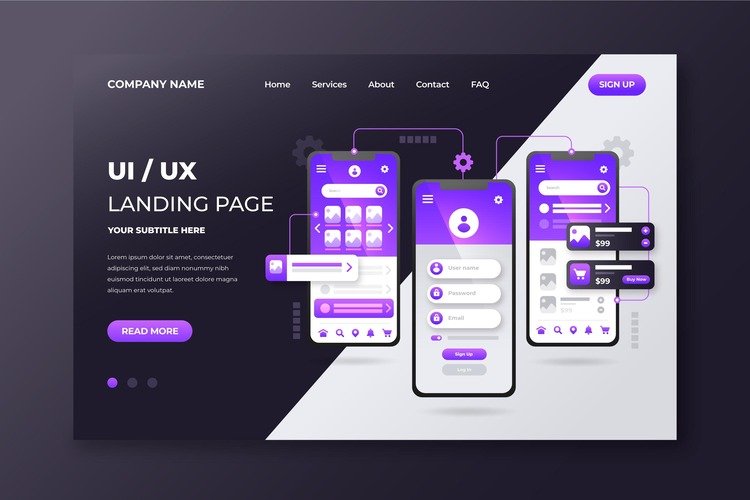Physical Address
304 North Cardinal St.
Dorchester Center, MA 02124
Physical Address
304 North Cardinal St.
Dorchester Center, MA 02124

How to check ranking of website on Google is one of the most common questions website owners and marketers ask and for good reason. Knowing where your site stands in search results is crucial for understanding your SEO performance and uncovering growth opportunities. In this guide, we’ll explore the best tools to track your rankings, compare their features, and help you choose the one that fits your needs. Whether you’re an SEO beginner or a seasoned pro, this breakdown will make monitoring your search visibility simple and effective.

When it comes to checking your website’s Google ranking, ease of use matters a lot. Whether you’re a beginner or a seasoned SEO pro, a tool that’s simple to navigate saves time and reduces the learning curve.
The best Google ranking checker tools have clean dashboards with straightforward navigation. You shouldn’t have to dig through five menus just to add a keyword or view your results. Look for tools that offer drag-and-drop features, guided walkthroughs, or even a quick-start dashboard for first-time users.
A tool that lets you quickly plug in your domain, add a few keywords, and see results in minutes is ideal. Tools like SERanking or Ubersuggest shine here they walk you through the setup process with clear steps and helpful tooltips.
Some platforms, especially all-in-one SEO tools, can feel overwhelming. While they might be powerful, they can be tough for beginners. If you’re just starting out, tools like WhatsMySERP or Mangools SERPChecker are much easier to grasp without sacrificing functionality.
A growing number of users are managing their SEO tasks on-the-go. Tools that offer mobile apps or responsive web designs (like SEMrush) make it easy to check rankings from anywhere.
Ease of use also includes how flexible the tool is. Can you easily filter results by device type, location, or keyword group? A good user experience allows you to personalize your data view without frustration.
A tool can have all the bells and whistles in the world, but if it’s not user-friendly, it won’t be used to its full potential. Whether you’re a solopreneur, a digital agency, or just managing your personal blog, prioritizing ease of use will help you stay consistent with tracking and ultimately, help you grow your rankings faster.

When you’re checking how your website ranks on Google, accuracy isn’t just a “nice-to-have” it’s essential. An inaccurate ranking tool can mislead your entire SEO strategy, wasting time, effort, and even money.
Some tools update rankings in real-time or within a few hours, while others refresh data only once per day or even weekly. Tools like AccuRanker or SERanking are known for faster refresh rates, which means you’re getting the most up-to-date snapshot of your keyword performance.
Why it matters: SEO is dynamic. Your rankings can fluctuate due to algorithm updates, new competitors, or changes to your own content. Real-time data keeps you one step ahead.
Google results vary based on the searcher’s location. The best tools let you check rankings from specific cities, countries, or even ZIP codes. This is especially important for local businesses or service providers. Tools like BrightLocal excel in hyper-local tracking.
Why it matters: Seeing national rankings is good, but if your customers are mostly in Los Angeles, you want to know how you rank in that market not in New York or globally.
Mobile and desktop search results often differ. Accurate tools let you check rankings separately for mobile and desktop, reflecting how your audience actually experiences your site.
Why it matters: With mobile traffic dominating, ignoring mobile rankings can lead to blind spots in your SEO strategy.
Many tools now go beyond the traditional “10 blue links” and show whether your site appears in SERP features like featured snippets, knowledge panels, or local packs. This adds depth to the data and shows you where you might be winning (or missing out).
Why it matters: Ranking in position #3 with a featured snippet above you isn’t the same as actually being the top result in the user’s eyes.
Some free or low-cost tools pull scraped data that may be outdated or cached. Reputable ranking checkers use verified APIs and structured data sources to minimize errors and give you reliable insights.
Why it matters: Decisions based on bad data can lead to misdirected content updates, incorrect keyword targeting, or even false sense of progress.
If you’re serious about SEO, don’t settle for just “close enough.” The more accurate the tool, the more confidently you can refine your strategy and boost your Google rankings. Look for tools that offer real-time updates, granular location filters, and device-level tracking they’re worth every penny for the clarity they bring.

A great Google ranking checker isn’t just about showing where a single keyword stands it’s about helping you track multiple keywords across different angles. The more flexible and comprehensive the tracking, the better insights you’ll gain for your SEO game plan.
Most tools have a cap on how many keywords you can monitor. Some free tools let you track a handful, while paid tools can support hundreds or even thousands. Before choosing a tool, make sure it aligns with the size of your website and content strategy.
Why it matters: If you’re running a blog, an eCommerce store, or managing multiple clients, being limited to 10 or 20 keywords won’t cut it.
Long-tail keywords are more specific and often easier to rank for but not all tools handle them well. A good rank tracker should allow you to track long phrases, even those with low search volume.
Why it matters: Long-tail keywords drive highly targeted traffic and are often key to growing organically, especially for new websites.
Can you track how a keyword performs in New York versus San Francisco or even globally versus locally? The best tools let you set geographic parameters for each keyword you’re tracking.
Why it matters: If your audience is region-specific, this feature helps ensure your SEO efforts are hitting the right markets.
Search rankings can vary dramatically between devices. Some tools give you the ability to track keyword positions on both desktop and mobile separately.
Why it matters: If your site is mobile-first or heavily optimized for mobile, you’ll want visibility into mobile-specific keyword rankings.
Advanced tools allow you to track not just your own keyword rankings, but also those of your competitors. This gives you a benchmark and helps you identify keyword opportunities they’re ranking for that you’re not.
Why it matters: Understanding what’s working for your competition can reveal gaps in your strategy and help you outmaneuver them.
Does the tool show whether your keyword ranks in featured snippets, local packs, image carousels, or other SERP features? These insights help you go beyond just ranking and focus on owning more search real estate.
Why it matters: Ranking in position #5 and owning a featured snippet is a win-win you’ll want to monitor closely.
Strong keyword tracking capabilities give you a clear view of what’s working, what’s not, and where the biggest opportunities lie. Whether you’re tracking 10 or 10,000 keywords, the right tool should give you control, flexibility, and deep insights across devices, locations, and competitors.

Knowing where your website ranks is useful but turning that data into actionable insights is where the real SEO power lies. That’s why strong reporting and analytics features are a must when choosing a Google ranking checker.
The best tools let you create reports that match your specific needs. Whether you want to track progress over time, focus on mobile rankings, or isolate local performance, customization makes it easier to zero in on what matters most.
Why it matters: A one-size-fits-all report might bury the metrics you care about. Custom reports keep your strategy focused and your stakeholders informed.
Graphs, trend lines, and charts make data much easier to digest than raw numbers. Tools that provide clean, visual dashboards help you quickly spot patterns like sudden drops, slow climbs, or plateaus in rankings.
Why it matters: SEO is a long game. Visual trends help you understand the bigger picture and adjust your efforts accordingly.
Being able to look back at where your keywords ranked weeks or months ago helps you evaluate what’s working and what isn’t. Tools like SERPWatcher and Ahrefs let you track keyword movement over time.
Why it matters: Without historical data, you can’t measure progress, identify seasonality, or pinpoint the impact of major changes like site redesigns or algorithm updates.
Automated reporting saves time and ensures you never miss key updates. Whether it’s a weekly summary or a monthly deep dive, automation keeps you (and your team or clients) in the loop.
Why it matters: You stay consistent and informed without manually logging in every day.
Some ranking tools go a step further by offering insights or recommendations based on your data. This might include keyword suggestions, content ideas, or on-page fixes to help you climb higher.
Why it matters: Rankings tell you where you are. Insights tell you what to do next. That’s a major value-add for beginners and pros alike.
If you’re running SEO for clients, white-label reporting is a bonus. It lets you brand the reports with your logo and style making your services look more polished and professional.
Why it matters: Great for building trust and credibility with clients.
Accurate rankings are just the beginning. What truly sets a great tool apart is how well it helps you interpret the data. Whether you’re tracking for yourself or managing multiple clients, detailed and flexible reporting turns raw data into smart strategy.

A powerful Google ranking checker does more than just show you positions it works with the rest of your SEO and marketing stack. Seamless integration saves time, reduces manual work, and brings all your data into one cohesive system.
The most valuable integrations are often with tools you already use like Google Analytics and Google Search Console. These connections allow your rank tracker to pull in deeper insights, such as click-through rates, impressions, bounce rates, and actual search queries.
Why it matters: When your keyword rankings are combined with real traffic and behavior data, you get a more accurate picture of what’s really working.
Does the tool integrate with popular SEO platforms like Ahrefs, Moz, or SEMrush? While some features may overlap, integrating can enhance your workflow like cross-comparing backlinks with keyword movement or syncing audit data with rank reports.
Why it matters: You avoid data silos and get a more complete view of your SEO performance.
Some rank trackers offer plugins or APIs that integrate directly with platforms like WordPress. This allows you to track rankings and implement changes without switching tools.
Why it matters: Faster content updates and easier access to insights while you’re working on your site.
If you manage SEO campaigns as part of a larger team or agency, integration with tools like Trello, Asana, or Slack can be a big win. This helps you assign keyword optimization tasks, track progress, and keep everyone aligned without constant back-and-forth.
Why it matters: Streamlined collaboration keeps your SEO projects moving forward more efficiently.
Even if a direct integration isn’t available, a solid export function can bridge the gap. Look for tools that offer data exports in formats like CSV or Google Sheets or better yet, have a public API.
Why it matters: Custom dashboards, client reports, or internal tracking become much easier to build and automate.
SEO doesn’t happen in a vacuum. The best ranking checkers fit into your existing tech stack and make your data more useful not more fragmented. If your workflow includes analytics, content management, reporting, or team collaboration, make sure your tool plays nice with them.

When choosing a Google ranking checker, cost is always a factor but it’s not just about the price tag. It’s about what you get for what you pay. Whether you’re a solo blogger, small business, or digital agency, finding a plan that balances features with affordability is key.
There are free tools out there, like Google Search Console or limited versions of SERP checkers. These can be great for casual use or beginners. But they usually come with restrictions limited keyword tracking, no location/device filtering, and minimal reporting.
Why it matters: If you’re serious about SEO or managing multiple projects, investing in a paid tool will save you time and give you deeper insights.
Many ranking tools offer affordable starter plans ranging from $10 to $30/month. These typically include tracking for a set number of keywords, basic reports, and essential features.
Who it’s for: Freelancers, small websites, or bloggers tracking a handful of keywords.
In the $40–$100/month range, you’ll usually find more generous keyword allowances, competitor tracking, mobile/desktop split data, and better reporting tools. These plans are great for growing websites or small marketing teams.
Who it’s for: Content-heavy sites, small businesses, and in-house marketers who need more depth without breaking the bank.
At the top end, plans can range from $100 to several hundred dollars per month, depending on scale. These usually include white-label reporting, team collaboration features, extensive keyword limits, and API access.
Who it’s for: Agencies, large SEO teams, or businesses managing multiple client sites or web properties.
Look for tools that let you scale up or down easily. Some platforms offer pay-as-you-go pricing, keyword-based pricing, or even custom plans tailored to your exact needs.
Why it matters: Your SEO needs may grow (or shrink). Flexible pricing ensures you’re never overpaying—or stuck.
Most premium tools offer free trials or a money-back period, giving you a chance to test before committing.
Pro tip: Take advantage of these trials to evaluate features like ease of use, speed, and report quality before locking into a subscription.
Pricing isn’t just about choosing the cheapest option it’s about getting the best value for your specific needs. Think about how many keywords you need to track, whether you’re working solo or as part of a team, and how deeply you want to analyze your results. A good ranking tool should pay for itself by helping you grow faster and smarter.

When you’re checking keyword rankings especially across multiple locations, devices, or competitors speed and system performance matter. A ranking tool that lags or crashes under pressure can waste time and disrupt your workflow. Here’s what to look for:
Some tools refresh rankings daily, while others offer real-time or on-demand updates. Fast updates give you the latest insights so you can respond quickly to changes like sudden drops or competitor jumps.
Why it matters: SEO is competitive. Timely data helps you stay ahead of algorithm shifts, new competitors, and search trend changes.
If you’re tracking hundreds or thousands of keywords, performance can take a hit. The best tools are optimized for bulk queries and still deliver fast results without lag or timeout errors.
Why it matters: Growing sites and agencies need scale without sacrificing usability. Speedy bulk tracking saves time and improves productivity.
Speed isn’t just about loading results it’s also about navigating the dashboard. A tool with a clunky or sluggish interface can be frustrating, especially when switching views, applying filters, or generating reports.
Why it matters: A fast, responsive UI improves your workflow and makes the tool more pleasant to use daily.
Most modern ranking checkers are cloud-based, which typically ensures better performance, auto-updates, and access from any device. Desktop tools can be powerful but may consume local system resources and slow down under load.
Why it matters: Cloud tools tend to be faster, more stable, and don’t rely on your local machine’s performance.
Speed is irrelevant if the tool isn’t available when you need it. Look for tools with strong uptime records and active support. A reliable platform ensures you won’t be stuck waiting when you’re on a tight deadline.
Why it matters: Consistency is key especially for agencies and professionals managing deliverables.
Speed and performance aren’t just “nice to have” features they directly impact how efficiently you can do your SEO work. A slow tool creates friction. A fast, stable one becomes an asset in your day-to-day operations. When testing options, don’t just focus on features pay attention to how fast and smooth the experience really is.

With over 60% of Google searches coming from mobile devices and an increasing number of those being location-specific tracking desktop rankings alone doesn’t give the full picture anymore. If you’re not monitoring mobile and local rankings, you could be missing out on critical insights.
Google’s mobile-first indexing means your site’s mobile version plays a primary role in how it ranks. But mobile search results can also differ from desktop due to layout changes, different snippet formats, and even different rankings.
Why it matters: A keyword that ranks #3 on desktop might show up at #8 on mobile or not at all. You need mobile-specific tracking to optimize for the real user experience.
Local rank tracking lets you see how your keywords perform in specific cities, neighborhoods, or even ZIP codes. This is especially important for:
Why it matters: Google tailors search results based on the user’s location. Without local data, your overall ranking might look strong while you’re underperforming where it actually counts.
A great rank tracker should offer:
Why it matters: These features help you optimize content and SEO strategies tailored to mobile-first and location-specific audiences.
Some tools update mobile and local rankings daily, while others may do so every few days. The more frequent the update, the more agile you can be in adjusting your strategy.
Why it matters: Local competition can shift quickly regular updates let you respond faster to opportunities and threats.
Mobile and local search visibility is no longer optional it’s a core part of any SEO strategy. Whether you’re a local business or a national brand targeting specific regions, you need rank tracking that reflects how your audience is actually searching. The tools that offer granular, accurate mobile and local tracking give you the edge where it really counts in front of the right users, in the right place, at the right time.

Knowing how your website ranks is important but knowing how your competitors rank is what gives you a strategic edge. A good rank tracking tool doesn’t just show your data; it reveals where your competition stands and what you can learn from them.
SEO is a zero-sum game if your competitor ranks higher, they’re likely getting the clicks you want. Tracking their performance helps you:
Why it matters: Insight into your competitors’ moves helps you plan smarter campaigns and spot new opportunities.
Top ranking tools include built-in competitor analysis features like:
Why it matters: These features let you see more than just who’s outranking you they show how and why.
Some tools require you to manually enter competitors; others auto-detect the top-ranking domains for your target keywords. While manual entry offers control, automated suggestions can surface rising competitors you hadn’t considered.
Pro tip: Use both. Start with your known rivals, then explore automated suggestions to find hidden threats or newcomers in your niche.
A single-day comparison isn’t enough. The best tools let you see how your competitors’ rankings evolve, spot their SEO surges or drops, and understand the impact of their content updates or backlink pushes.
Why it matters: Tracking trends over time gives context helping you separate one-time spikes from long-term gains.
Competitor analysis turns your SEO strategy from reactive to proactive. It’s not just about beating them at a single keyword it’s about building a roadmap that puts you ahead overall. A rank tracker with strong competitor features doesn’t just show where you stand it shows where to go next.

When it comes to using SEO tools, the quality of customer support can be a make-or-break factor. No matter how intuitive or feature-packed a tool is, you’ll inevitably have questions or run into issues. Having responsive, knowledgeable support and easy-to-access resources can save you valuable time and frustration.
Look for tools that offer a variety of support channels. Common options include:
Why it matters: The more options available, the easier it is to get help in the format that suits your needs.
No one wants to wait days for an answer. Top-tier support teams should offer quick response times, especially for urgent queries. But speed is only part of the equation the quality of the response is just as important. Support staff should be knowledgeable, clear, and able to resolve your issues quickly.
Why it matters: When you’re dealing with technical issues or need guidance on using advanced features, a swift and effective solution is crucial for minimizing downtime.
A strong support team should also be backed by educational resources. Look for tools that offer:
Why it matters: The more resources available, the quicker you can troubleshoot problems on your own and make the most of the tool.
Some tools offer user communities, where users can ask questions, share tips, and discuss best practices. These communities might be in the form of forums, Facebook groups, or Slack channels.
Why it matters: Community support can provide insights and creative solutions from other users who’ve faced similar challenges.
Good tools often provide onboarding assistance to ensure you’re up and running smoothly. This can include personalized setup help, training sessions, or walkthroughs tailored to your business needs.
Why it matters: Effective onboarding helps you get the most value out of the tool from day one, so you’re not fumbling through complex features.
Great customer support is about more than just resolving issues it’s about making sure you have the tools and knowledge to succeed. Whether it’s through instant chat, helpful resources, or expert guidance, good support saves you time and boosts your confidence in using the tool. Make sure to choose a rank tracker that’s got your back when you need help.
Tracking your website’s ranking on Google is no longer a luxury it’s a necessity for any serious digital marketer, business owner, or SEO professional. Whether you’re trying to outrank competitors, optimize for mobile users, or understand how you’re performing in different locations, a solid rank tracking tool gives you the data you need to make smarter decisions.
But not all rank trackers are created equal. The best tools offer:
When choosing the right tool, think about what matters most for your SEO strategy whether it’s comprehensive reporting, granular local tracking, or seamless integrations. A well-chosen rank tracker can not only show you where you stand but also help you climb higher in the search results.
At the end of the day, SEO is about visibility and visibility starts with knowing where you rank.